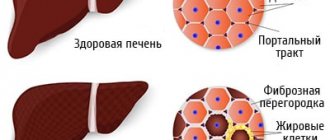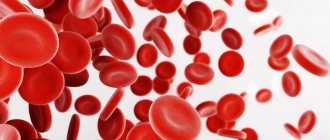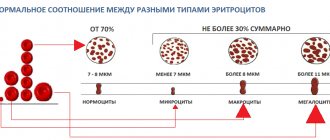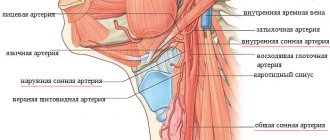Adrenocorticotropic hormone, or ACTH, is a hormone produced by the pituitary gland, a small gland at the base of the brain. It stimulates the secretion of steroid hormones in the adrenal cortex, two small glands located above the kidneys. Its main effect is to increase the production of the hormone cortisol by the adrenal glands.
Cortisol plays an important role in helping to: respond to stress; fight infection; regulate blood sugar levels; maintain blood pressure; regulate metabolism - the use of food and energy. Too much or too little cortisol can cause serious health problems.
Adrenocorticotropic hormone is used as a medicine and diagnostic agent. ACTH is an important component of the hypothalamic-pituitary-adrenal axis and is often produced by the body in response to biological stress.
What is adrenocorticotropic hormone? Chemical structure and synthesis
The content of the article
Adrenocorticotropic hormone or ACTH is a polypeptide with a molecular weight of 5250, consisting of 39 amino acid residues in a single chain, without disulfide cross-links. Its biological activity is manifested in the sequence of the first 24 N-terminal amino acid residues, and this sequence is identical in all species studied.
Adrenocorticotropic hormone is produced by corticotropic cells of the anterior pituitary gland. ACTH is secreted in response to the release of corticotropin releasing hormone or CRH from the hypothalamus. The effect of CRH on ACTH release is enhanced by another hypothalamic hormone, vasopressin. ACTH production and secretion are regulated by glucocorticoid feedback, with ACTH being at the center of a homeostatic network involving the hypothalamus and pituitary gland.
It is secreted throughout the day in several intermittent pulses and transported by the blood throughout the body. Like cortisol, adrenocorticotropic hormone levels are typically highest in the morning upon waking and lowest during sleep. This is called the daily or circadian rhythm.
The synthesis, storage, and release of ACTH by the pituitary gland is influenced by stress, circulating corticosteroid levels, and a 24-hour cyclic rhythm that responds slowly to day/night cycles and sleep patterns. All of these regulatory effects are thought to be mediated by hypothalamic corticotropin releasing factor, or CRF. ACTH levels are also affected by sleep, exercise, and pregnancy.
ACTH production can occur in four main classes of tumors: bronchial carcinoma, ovarian carcinoma, pheochromocytoma, and endocrine foregut tumors such as bronchial or thymic carcinoid, medullary thyroid carcinoma, and pancreatic islet tumors.
Functions of adrenocorticotropic hormone
- Adrenocorticotropic hormone reaches the adrenal glands and binds to receptors, causing the adrenal glands to secrete more cortisol, which leads to higher levels of cortisol in the blood. It also increases the production of chemical compounds that cause an increase in the levels of other hormones - adrenaline and norepinephrine.
- ACTH stimulates the synthesis and release of cortisol within 2 to 3 minutes, increasing the formation of free cholesterol, as a consequence of increased cholesterol and decreased cholesterol esters.
- ACTH accelerates the transport of cholesterol across mitochondrial membranes, promotes the binding of cholesterol to cytochrome P450scc and the release of newly synthesized pregnenolone from mitochondria.
- ACTH stimulates the release of adrenal mineralocorticoids and androgens, as well as the release of various intermediates.
- The chronic action of ACTH affects both the structure of the adrenal glands and steroidogenesis. ACTH continuously stimulates the uptake and metabolism of low-density lipoprotein or LDL, the synthesis of the LDL receptor and other factors. Therefore, it has a stimulating effect on all known early stages of steroidogenesis.
- The persistent effects of ACTH on steroidogenesis arise mainly through stimulation of the transcription of genes encoding steroidogenic enzymes and other factors. ACTH increases transcription of the P450scc, P450c17, P450c21, and P450c11 genes and stimulates human P450scc mRNA accumulation and human P450scc activity. The exact mechanisms of ACTH stimulation of the side chain cleavage enzyme P450scc are not yet known.
- ACTH promotes both adrenal cell hypertrophy and hyperplasia. ACTH in physiological concentrations can promote the synthesis of insulin-like growth factor-II or IGF-II, the synthesis of basic fibroblast growth factor and epidermal growth factor, which act together with IGF-II to stimulate adrenal growth.
- ACTH plays a role in glucose metabolism and immune function.
Aldosterone
Aldosterone is a steroid hormone. Its main function is to regulate salt and water levels in the body, whose levels directly affect blood pressure.
The hormone acts on the kidneys and colon, increasing the amount of sodium reabsorbed into the bloodstream and sodium excreted in the urine. Aldosterone causes the reabsorption (reabsorption) of water along with sodium, which increases blood volume and with it blood pressure.
Aldosterone is part of the renin-angiotensin-aldosterone group of related hormones. The system is activated if blood flow to the kidneys decreases. Aldosterone increases the reabsorption of salt and water from the kidneys into the bloodstream, thereby increasing blood volume, restoring salt levels and blood pressure.
Reasons for changes in aldosterone levels
The most common cause of high hormone levels is overproduction caused by primary hyperaldosteronism (Conn's syndrome). The syndrome develops against the background of diffuse edema, adrenal hyperplasia or a small, always benign tumor in the gland (adrenal adenoma). Sometimes hyperaldosteronism is a hereditary disease.
Consequences, symptoms of elevated aldosterone levels:
- an increase in blood volume above normal;
- low level of potassium in the blood (about 1/3 of subjects with hyperaldosteronism);
- high blood pressure - in this case it does not respond to several drugs to regulate blood pressure;
- in some cases - convulsions, severe thirst, weakness.
Consequences, symptoms of low aldosterone levels:
- decreased blood pressure;
- lethargy;
- increased potassium levels in the blood.
Aldosterone levels for people over 15 years of age (not established for children and adolescents):
- 22.1 – 353 pg/ml in a vertical position;
- 2.8 – 39.9 µIU/ml in a horizontal position;
- less than 12 pg/μIU—aldosterone-renin ratio (ARR).
The Russian Association of Endocrinologists recommends diagnosing primary hyperaldosteronism when APC ≥ 50; in international practice - with APC ≥ 30.
To confirm the diagnosis, a repeat study is required, since there are many factors that lead to false positive and false negative results. Among them are hyperkalemia, drug effects, renal failure, hypokalemia, pregnancy and others.
How to submit biomaterial and prepare for research
Approximately 2 weeks to a month before the study, you need to adhere to a low-carbohydrate diet, do not take diuretics, antihypertensive drugs (after consultation with a doctor), oral contraceptives, steroid drugs, estrogens.
A week before the study, stop taking renin inhibitors. In 3 days, physical and psycho-emotional stress is eliminated. And 3 hours before donating blood you need to refrain from smoking.
Mechanism of action of ACTH
CRH is released from the hypothalamus. CRH stimulates the release of ACTH from the anterior pituitary gland. ACTH acts on the adrenal cortex, releasing cortisol and androgens. Increased cortisol levels provide a negative feedback system to reduce the amount of CRH released from the hypothalamus.
ACTH acts on G protein-coupled receptors on the extracellular membranes of the fascicular and reticular zones of the adrenal cortex. cAMP is a secondary messaging system. Activation of the g-pair receptor activates adenylate cyclase, thereby increasing cAMP production.
The circadian rhythm influences the secretion of cortisol. Cortisol levels are highest in the early morning and lowest in the evening. This concept is important for diagnostic testing.
How is the production of adrenocorticotropic hormone controlled?
The secretion of adrenocorticotropic hormone is controlled by three interconnected areas of the body:
- hypothalamus;
- pituitary gland;
- adrenal glands.
This is called the hypothalamic-pituitary-adrenal axis, or HPA. When cortisol levels in the blood are low, a group of cells in the hypothalamus releases a hormone called corticotropin-releasing hormone, or CRH. It stimulates the pituitary gland to secrete adrenocorticotropic hormone into the bloodstream.
High levels of adrenocorticotropic hormone are determined by adrenal receptors. This stimulates the secretion of cortisol, causing an increase in its levels in the blood. As cortisol levels rise, the release of corticotropin-releasing hormone from the hypothalamus and adrenocorticotropic hormone from the pituitary gland begins to decrease. As a result, the level of adrenocorticotropic hormone and, as a result, cortisol begins to fall. This is called a negative feedback loop.
Stress, both physical and psychological, stimulates the production of adrenocorticotropic hormones and therefore increases cortisol levels.
Hormone content standards
Standard values may vary between laboratories. The analysis must be deciphered by the medical institution that performed the analysis. Average cortisol data depend on the patient’s age and are measured in nmol/l:
- in children under 10 years old – from 28 to 1049;
- from 10 to 14 years – from 55 to 690;
- from 14 to 16 years old – from 28 to 856;
- teenagers after 16 years – from 138 to 635 units.
Hormone concentrations may differ at different times of the day. The highest values are recorded in the morning, then cortisol levels drop and return to peak maximum parameters between 18 and 23 hours. In pregnant women, indicators can exceed standard values by 2-5 times, which is normal and not a sign of pathology.
What is cortisol? Chemical structure and synthesis
Cortisol is a steroid hormone synthesized in the adrenal cortex from cholesterol. Cortisol is a derivative of isopentenyl pyrophosphate or IPP.
Cortisol synthesis
Pregnenolone, a common precursor of steroid hormones such as cortisol, is synthesized in the mitochondria of the adrenal cortex. The enzyme that catalyzes the formation of pregnenolone through the 20α-dihydroxycholesterol intermediate is called cholesterol desmolase and is a monooxygenase. It contains NADPH as a cofactor. It requires heme-containing cytochrome P450 as a coenzyme.
However, the main substance in the biosynthesis of cortisol is not cholesterol desmolase, but cholesterol translocase, located on the outer membrane of mitochondria. It transports essential cholesterol to the inner mitochondrial membrane. This protein, known as the “StAR protein,” is an acutely regulated steroidogenic protein.
The synthesis of pregnenolone begins with cholesterol. Pregnenolone leaves the mitochondria and is converted to progesterone by 3β-hydroxysteroid dehydrogenase. In the endoplasmic reticulum, this progesterone is converted to 17α-hydroxyprogesterone by the enzyme 17-steroid hydroxylase.
Further hydroxylation catalyzed by 21-hydroxylase produces 11-deoxycortisol. It is converted to cortisol in the mitochondria by the steroid 11beta-hydroxylase.
The formation of cortisol in the fascicular zone of the adrenal cortex is stimulated by adrenocorticotropic hormone or ACTH from the pituitary gland.
References
- Belaya, Zh.E., Rozhinskaya, L.Ya., Melnichenko, G.A. Modern view on screening and diagnosis of endogenous hypercortisolism. Problems of endocrinology, 2012. - V. 4. - P. 35-41.
- Federal clinical guidelines. Itsenko-Cushing's disease: clinical picture, diagnosis, differential diagnosis, treatment methods. Russian Association of Endocrinologists, 2014.
- Wilson, D. McGraw-Hill Manual of Laboratory and Diagnostic Tests 1st Ed Normal, 2007.
- Dorn, L., Lucke, J., Loucks, T. et al. Salivary cortisol reflects serum cortisol: analysis of circadian profiles. Ann Clin Biochem, 2007. - Vol. 44(3). — P. 281-84.
- Nicolson, N. In L. J. Luecken and L. C. Gallo. Measurement of Cortisol. In: Handbook of Psychological Research Methods in Health Psychology. Sage Publications, 2008, pp. 37–74.
Physiological effect
Cortisol activates catabolic metabolic processes and provides the body with high-energy compounds.
Cortisol has a broad spectrum of action and has metabolic effects on:
- carbohydrate balance – promotes gluconeogenesis in the liver;
- lipid metabolism – promotes the lipolytic effect of adrenaline and norepinephrine;
- protein metabolism is catabolic.
Cortisol delays the excretion of water and has an anti-inflammatory effect.
Cortisol is involved in regulating human growth.
The goal of metabolic activation through cortisol is to increase the body's available energy so it can better withstand one-time or repeated physical and psychological stress. Thus, cortisol is closely related to physical and mental stress and can be considered the most important stress hormone.
Because, under the influence of cortisol:
- body temperature rises;
- energy metabolism is activated;
- pain reactions are suppressed.
Causes of abnormal cortisol levels
Changes in hormone levels can be provoked by:
- amphetamines;
- vasopressin;
- hormonal contraceptives;
- interferon;
- corticotropin;
- metoclopramide;
- methoxamine;
- naloxone;
- nicotine;
- estrogen;
- ethanol
Increased concentration is recorded with excessive consumption of alcohol and tobacco products. A reduced amount of cortisol occurs due to the presence in the body of:
- barbiturates;
- dexamethasone;
- ketoconazole;
- levodopa;
- lithium-based drugs;
- morphine;
- nitrogen oxides;
- magnesium sulfate;
- triamcinolone;
- ephedrine.
When changes in hormonal balance are detected, the search for the source of dysfunction begins.
Why do you need an ACTH and cortisol test?
This test may be needed if a patient has symptoms of too much or too little cortisol.
Symptoms of high cortisol levels:
- weight gain;
- accumulation of fat in the shoulders;
- pink or purple stretch marks on your stomach, thighs, and chest;
- easily appearing bruises on the skin;
- increase in body hair;
- muscle weakness;
- fatigue;
- acne.
Symptoms of low cortisol levels:
- weight loss;
- nausea and vomiting;
- diarrhea;
- abdominal pain;
- dizziness;
- darkening of the skin;
- craving for salty foods;
- fatigue.
This test may be needed if the patient has symptoms of hypopituitarism. Symptoms will vary depending on the severity of the disease, but may include the following:
- loss of appetite;
- irregular menstruation and infertility in women;
- hair loss on the body and face in men;
- decreased libido in men and women;
- sensitivity to cold;
- frequent urination;
- fatigue.
Complexes with this research
Stress complex Assessment of the body's condition during stress 4,360 ₽ Composition
Advanced male anti-aging diagnostics Advanced monitoring of key indicators in men aged 40+ 34,230 ₽ Composition
Preventive check-up Universal annual preventive screening 6,300 ₽ Composition
IN OTHER COMPLEXES
- Advanced anti-aging diagnostics in postmenopause RUB 29,710
- Male anti-aging diagnostics RUB 13,520
- Adrenogenital complex RUB 2,590
- Women's anti-aging diagnostics RUB 12,280
- Female infertility RUB 16,470
Preparation for analysis, test procedure and its risks
It is recommended to fast overnight before testing. Tests are usually done early in the morning because hormone levels change throughout the day.
What happens during an ACTH test?
The healthcare professional will take a blood sample from a vein in your arm using a small needle. Once the needle is inserted, a small amount of blood will be collected in a tube. A slight tingling sensation may occur as the needle is inserted and removed. The procedure usually takes less than five minutes.
Are there any risks to the test?
The risk of having a blood test is very low. There may be some mild pain or bruising where the needle was inserted, but most symptoms go away quickly.
Where to get tested
The network of medical centers and laboratory terminals of SZTsDM JSC covers St. Petersburg, Novgorod, the Leningrad region, Kaliningrad, Pskov.
To find the branch closest to you, use the drop-down menu on the top bar, interactive map or table. In the menu and on the map, you can click on the selected object - and you will receive complete information about the location, hours and days of reception. The map can be opened in YandexMaps to conveniently calculate the route.
In any department you will be greeted by qualified and attentive staff, sterile cleanliness, and you will be provided with a modern level of service and diagnostics.
We invite you to undergo research on the level of adrenal hormones at SZTSDM!
Remember that early detection of a problem is the key to complete and rapid success in identifying it. Be healthy!









